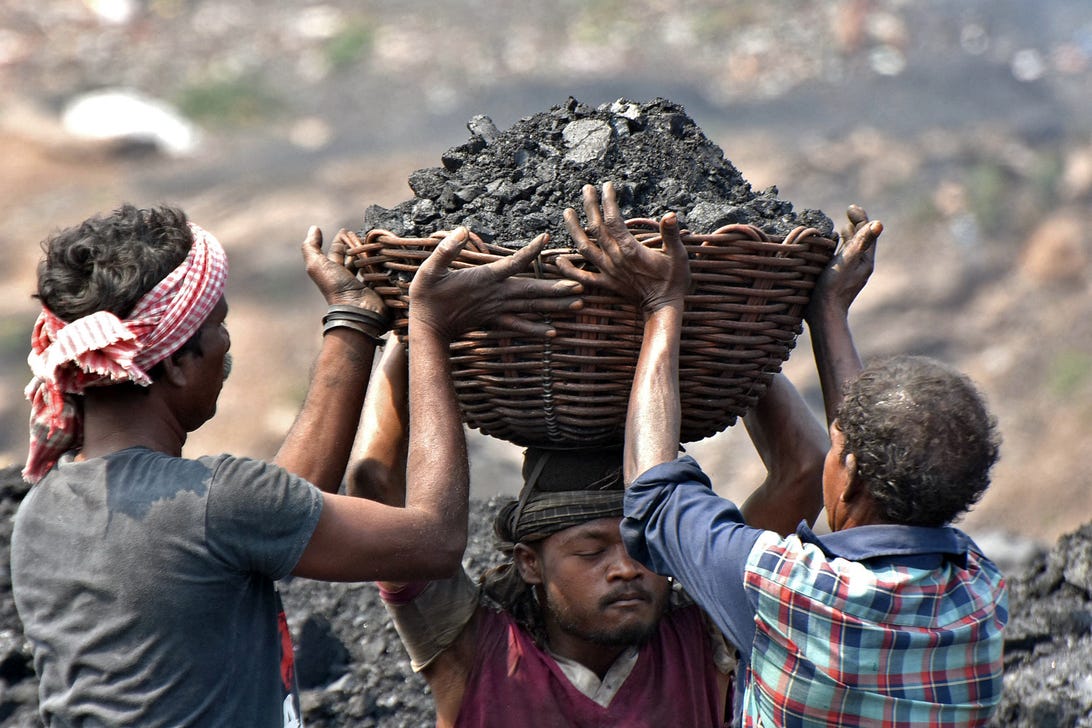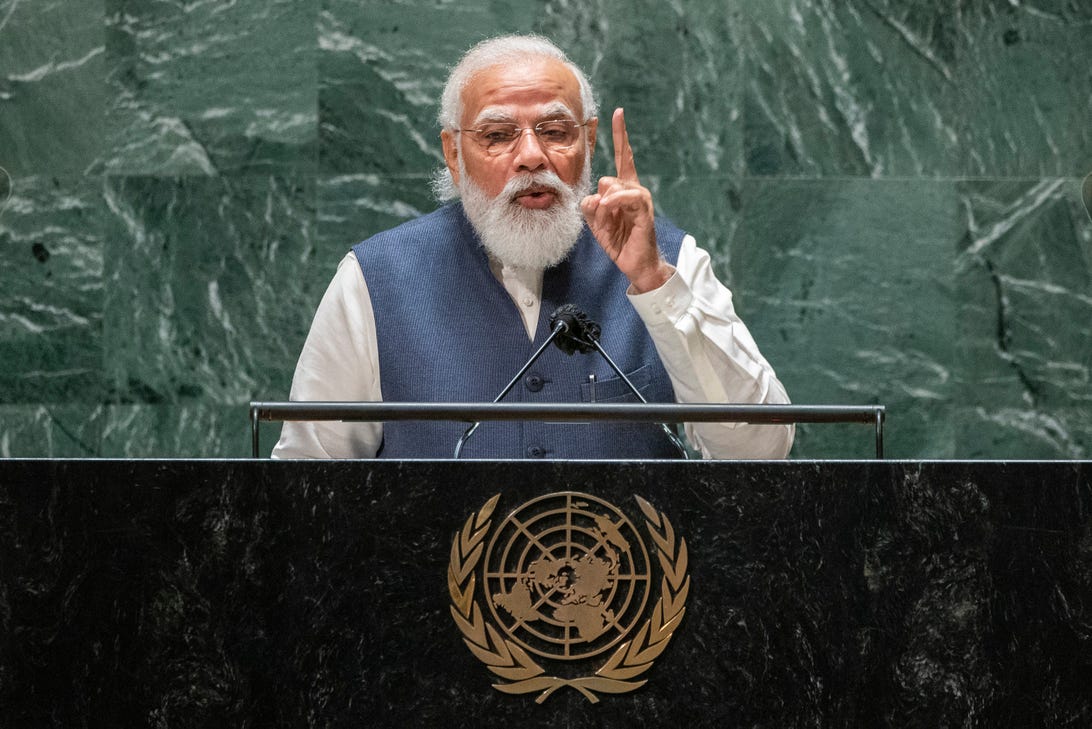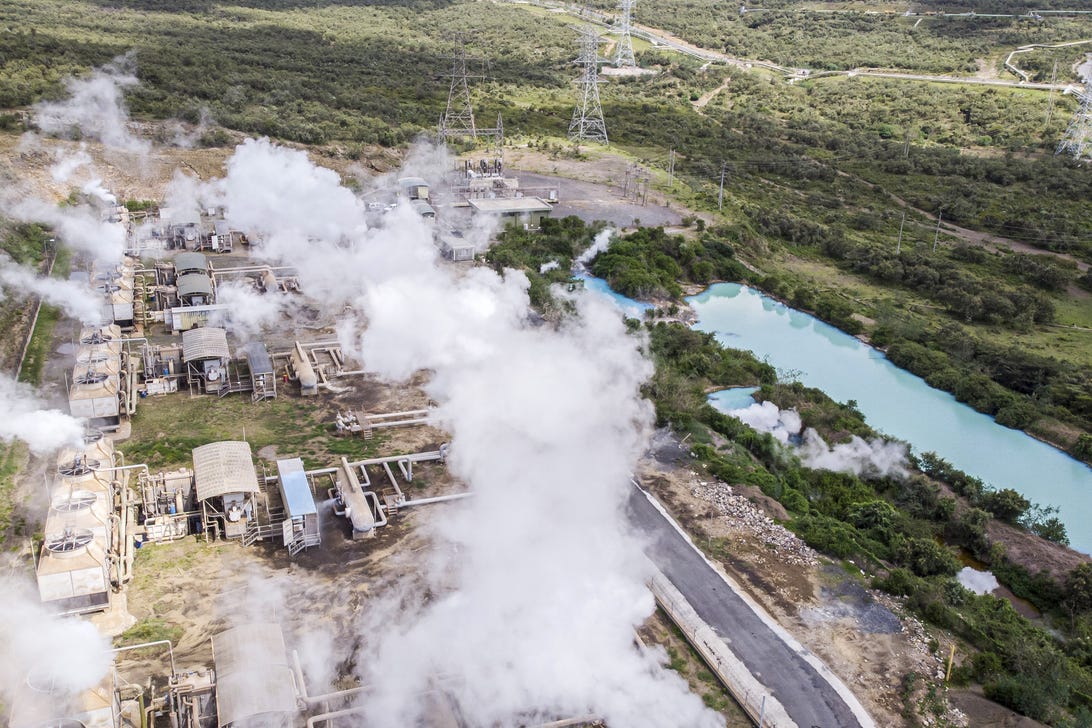
At a coalfield in India's state of Jharkhand, workers prepare to load coal onto a truck.
Gautam Dey/GettyNigeria recently made a fortuitous discovery. While its energy department was searching underground for oil, it stumbled upon unexpected reserves of natural gas. Lots of it. It found over 200 trillion cubic feet of gas, and thinks it can find three times that amount if it looks hard enough.
That puts Nigeria in an awkward position. As a signatory of the Paris Agreement, it has committed to getting 36% of its electricity from renewable sources by 2030, up from 13% in 2015. Yet the convenient energy and revenue these newfound gas reserves provide are invaluable to a developing country. Over 40% of Nigeria's 208 million citizens don't have regular access to electricity.
It's a bind common to most developing nations. In 2015's Paris Agreement, most of the world's nations committed to lowering emissions to prevent global temperatures from rising 1.5 degrees Celsius above pre-industrial levels, but few have illuminated a clear path to getting there. With the UN's COP26 conference on climate change coming up in Glasgow on Sunday, pressure is mounting on governments around the globe to do more, whether rich or poor. The expectation that less developed countries should curb carbon at the same rate as wealthy ones strikes some experts as unrealistic and unfair. Wealthy nations are responsible for the vast majority of emissions.
The developing world is in a hard spot, wedged between poverty and climate catastrophe. Poorer countries have a greater need to ramp up energy production and fewer tools to reduce emissions, yet they're more likely to be affected by human-caused climate change.
Countries like the US, UK and Germany are struggling to lower carbon emissions fast enough despite extensive financial resources, swathes of talented engineers, and stable governments. Few countries outside of the US and Europe have all three, which makes transitioning to clean energy much harder. Compounding the challenge is the fact developing nations are, well, developing. That means there's a significant need to build roads, offices and manufacturing hubs -- all of which requires vast amounts of energy.
Most of that energy currently comes from coal, which produces lots of carbon dioxide, and natural gas, which is about 50% cleaner but still a heavy pollutant. Developing countries, which include India, Bangladesh, Pakistan, all of Africa and a lot of China, therefore face a conundrum: how to build cities, functioning grids and other infrastructure without causing carbon emissions to spike?
The answer partially relies on renewable energies, like solar and wind. But it could take decades for the requisite capacity to be built and, with current technologies, wind and solar can't provide the power to build roads and forge commodities like iron and cement.
"It's easy to say, 'you should be carbon neutral by 2050,' said Vijaya Ramachandran, research fellow at the Center for Global Development. "The reality is that many poor countries consume very little energy, and they have almost nothing to do with emissions to date. To ask those countries to no longer use fossil fuels while they're trying to grow their economy is unfair."
Finding the right answer matters for everyone. Many of the world's poorer countries are the most impacted by climate change. Nations in the Pacific are being slowly submerged, while extreme weather events are becoming more common in vulnerable states like Bangladesh. Current trends in global warming may ruin Africa's agriculture industries.
Just as crucially, most of the planet's population lives in developing nations. For global warming to stay below 1.5 degrees Celsius, we need a solution to the poor world's plight.
Mitigation vs. development
Britain's Industrial Revolution kicked off in 1760, fueled by steam power. That same energy allowed the country's industrialists to pioneer the development of railways, which the British then built across its empire. Thanks to these railways, India was able to begin its own industrialization in the 1850s -- 90 years after Britain.
That the UK, US and much of Europe were able to get a near century-long head start on modernization is one of the reasons poorer countries, like India, balk at the idea they should be cutting emissions at the same pace as wealthy ones. India may produce more coal today than the US, but its carbon emissions to date are estimated to be around 13% of Uncle Sam's.
Developing countries have said they'll commit to lowering their carbon emissions if rich countries remunerate them for doing so. The Philippines, for instance, promises to lower its carbon reductions by 75% by 2030, but 72.3% of those reductions are conditional on climate aid.
A key element of the Paris Agreement is its insistence that $100 billion be funneled from rich countries to developing ones each year from 2020 to 2025. This raises three problems. First, the world's wealthy nations are unlikely to live up to the promise, coming up $20 billion short in 2019. (The figure for 2020 is not yet public.) Second, even $100 billion a year may not be expeditious enough. The International Energy Agency says $1 trillion annually is closer to the mark. Finally, most of the money currently funneled goes toward immediate risk mitigation in the form of infrastructure adaptation -- reinforcing buildings so they don't fall down during cyclones, for instance, or improving weather tracking systems -- rather than long-term carbon reduction.

India's prime minister, Narendra Modi, campaigned on bringing electricity to all Indians.
Pool/GettyBoosting payments will be one of the many contentious issues confronted by world leaders and their negotiators at COP26. But even if these payments are raised, there are still questions about whether developing countries can realistically keep carbon emissions down while simultaneously building roads, dwellings and other infrastructure.
Powering a building with solar and wind energy is common. Using solar and wind to construct that building, through the forging of iron and cement, is less so.
In the US and Europe, development and carbon mitigation are two separate issues, notes Leon Clarke, acting director of the Center for Global Sustainability. In poor countries, development and carbon mitigation are the same issue. Scientists in China have argued that less developed countries can grow and reduce their carbon footprint, but that requires not just the ramping up of solar and wind power, but also the expanded use of nuclear energy, which is expensive and politically unpopular.
In confronting this dilemma, some experts have argued, or hoped, that developing countries can "leapfrog." Germany has spent hundreds of billions trying to transition from coal and gas to solar and wind, but the shift has, thus far, proved underwhelming. Part of the reason is the existing infrastructure isn't suited to renewable energies -- new wind farms were built in the country's north, but the grid can't transport that energy to the industrial south. The hope is that less developed nations can bypass this problem because building green infrastructure from the ground up will be easier than shifting existing systems to green energy.
Ramachandran of the Center for Global Development doesn't share the optimism. "For poor countries, leapfrogging is not an option," she said. "It's unrealistic. There are many things poor countries have to do to become richer that require fossil fuels, and the technologies that are renewable-only are decades away."

Kenya has become a world leader in geothermal energy. One of its geothermal plants is pictured here.
Bloomberg/GettyGlimpses of hope
There are some promising signs. China, Japan and South Korea have provided 95% of the financing for overseas coal plants since 2013, most of which were in emerging markets, but this year all agreed to stop funding new coal projects. Vietnam halved its projected use of coal power between now and 2030. Kenya has managed to become a world leader in geothermal energy, which harnesses heat from the Earth to produce clean electricity.
To bring about more progress, Clarke suggests finding ways to use renewable energy to solve not the long-term problem of climate change, but rather to address some of the developing world's more immediate needs.
"How do you frame it in a way that's consistent with a desire to grow to Western [emission] standards?" he said. "Energy access, economic competitiveness, air pollution, energy security, those are the ways you're going to get mitigation in those parts of the world."
The story may be different if the world's wealthiest nations had already figured out how to power a country with renewable energies. Much of the rich world still relies heavily on fossil fuels, notes Ramachandran, pointing to the UK firing up coal plants to meet energy demands last month.
Right now, she argues, the best option is for rich countries to develop a renewable model that works. Then, it can be exported around the globe -- just like railroads were 150 years ago.
"between" - Google News
October 30, 2021 at 07:00PM
https://ift.tt/3CpWZ33
COP26: Poor countries are stuck between poverty and climate disaster - CNET
"between" - Google News
https://ift.tt/2WkNqP8
https://ift.tt/2WkjZfX
Bagikan Berita Ini
















0 Response to "COP26: Poor countries are stuck between poverty and climate disaster - CNET"
Post a Comment